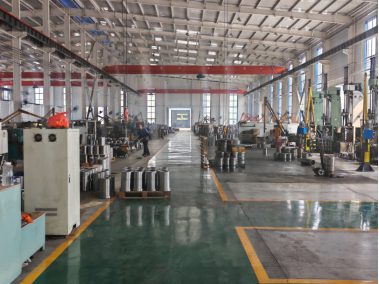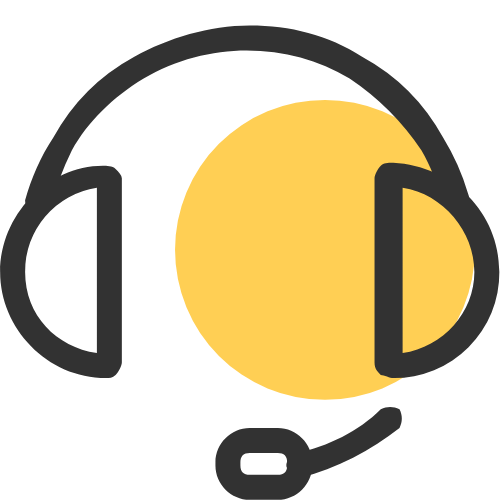Introduction to Mud Pump Liners
Mud pump liners serve as the critical wear components within mud pumps, protecting the pump housing from abrasive drilling fluids while maintaining hydraulic efficiency. These cylindrical sleeves act as the first line of defense in drilling operations, where they endure extreme pressures (up to 7500 psi) and temperatures (-40°F to 350°F) while handling corrosive fluids containing H₂S and abrasive solids (8.Mud Pump Ceramic Liner Technical Report).
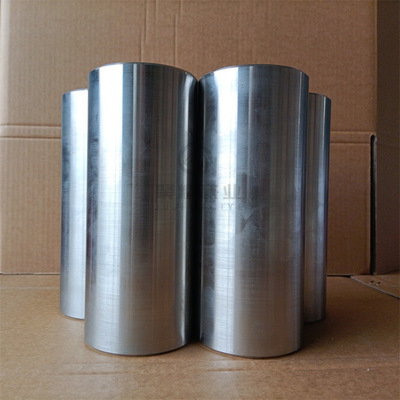
The selection of appropriate liners directly impacts operational costs—premature wear can increase replacement frequency by 300%, while optimized materials like zirconia ceramics extend service life to 4,000+ hours (2024至2030年中国泥浆泵缸套市场现状与发展前景分析报告). This makes liner selection a strategic decision balancing material science, operational parameters, and total cost of ownership.
Key Applications
Mud pump liners are indispensable across three primary industries:
Oil & Gas Drilling
- Offshore Platforms: Ceramic liners (70% Al₂O₃ + 30% ZrO₂) withstand 24 ppm H₂S in sour gas fields, reducing failure rates by 60% compared to metal liners at 7500 psi (8.Mud Pump Ceramic Liner Technical Report).
- Shale Operations: Bi-metal liners (Cr26-28% steel) dominate horizontal drilling, with PetroChina reporting 47% cost savings in Xinjiang fields (Customer Case).
Mining & Geological Exploration
- Core drilling relies on BW-320 type pumps with polyurethane pistons, where liner roughness ≤0.8μm ensures precise slurry control (BW320型三缸柱塞泵).
- Coalbed methane extraction utilizes ceramic-matrix liners to handle silica-rich abrasives, reducing wear rates by 72% (2025年中国泥浆泵双金属缸套行业市场情况研究及竞争格局分析报告).
Construction & Civil Engineering
- Tunnel boring machines employ 45# steel liners with Ra ≤1.2μm surfaces for grout pumping in subway projects (BW350泥浆泵缸套-高压力注浆泵易损件).
- Dam construction utilizes hardened liners for slurry wall operations, with service lives exceeding 1,000 hours under continuous high-pressure injection (一种赛隆陶瓷泥浆泵缸套及其制作方法).
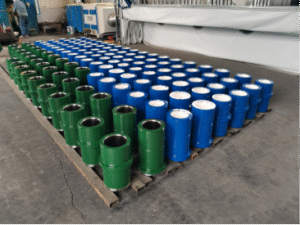
Table: Regional Demand Distribution for Mud Pump Liners
| Region | Market Share | Dominant Application | Growth Driver |
|---|---|---|---|
| North America | 35% | Shale gas & offshore drilling | 5.8% CAGR in HT/HP wells |
| Asia-Pacific | 28% | Coalbed methane & infrastructure | Belt & Road Initiative projects |
| Middle East | 22% | Sour gas field development | 40% downtime reduction with ceramics |
(Mud Pump Liner Market | Investment Opportunities)
This diversified application landscape underscores the need for tailored liner solutions—whether optimizing for corrosion resistance in offshore operations or wear longevity in mineral exploration. The global market, valued at 450millionin2024,isprojectedtoreach450millionin2024,isprojectedtoreach650 million by 2031, driven by technological advancements in composite materials and rising energy exploration activities (Mud Pump Liner Market | Investment Opportunities).
7 Key Factors for Choosing the Best Mud Pump Liner
Selecting the optimal mud pump liner requires balancing seven critical technical and operational parameters. These factors collectively determine equipment longevity, drilling efficiency, and total cost of ownership across diverse applications from shale gas extraction to deepwater exploration.
Material Composition
The liner’s material directly impacts its resistance to abrasion, corrosion, and thermal stress. Three primary material types dominate the market:
Ceramic Liners (Al₂O₃-ZrO₂ Composite)
- Advantages:
- 5-10× longer lifespan (2,000-4,000 hrs) vs metal liners (8.Mud Pump Ceramic Liner Technical Report)
- HRA85-92 hardness withstands silica-rich abrasives
- 24 ppm H₂S tolerance for sour gas wells
- Limitations:
- 3-5× higher initial cost
- Brittle nature requires careful handling
Bi-Metal Liners (Cr26-28% Steel)
- Optimal Use: Horizontal drilling with moderate abrasives
- Performance:
- 300-800 service hours
- HRC60-65 hardness balances cost/durability
- PetroChina reported 47% cost savings in Xinjiang fields (Customer Case)
Chrome-Plated Liners
- Economics: Lowest upfront cost
- Applications: Short-term projects with non-corrosive fluids
- Constraints:
- 50-200 hour lifespan
- Unsuitable for HTHP (High-Temperature High-Pressure) conditions
Table: Material Performance Comparison
| Material | Hardness | Max Temp | H₂S Tolerance | Cost Index |
|---|---|---|---|---|
| Ceramic | HRA85-92 | 350°F | 24 ppm | 100 |
| Bi-Metal | HRC60-65 | 250°F | 10 ppm | 35 |
| Chrome-Plated | HRC55-60 | 200°F | 5 ppm | 20 |
Pressure and Temperature Ratings
Operational limits define liner suitability for specific drilling environments:
Extreme Conditions Performance
- Offshore Drilling: Ceramic liners maintain integrity at 7,500 psi in North Sea deployments, reducing failure rates by 60% vs metal alternatives (8.Mud Pump Ceramic Liner Technical Report)
- Geothermal Wells: ZrO₂ composites withstand 350°F thermal cycling without cracking
- Arctic Operations: Specialty alloys remain ductile at -40°F
Failure Risks
- Pressure surges exceeding rated limits cause microcracks in ceramic liners
- Thermal shock occurs when ΔT >150°F/min during cold fluid injection
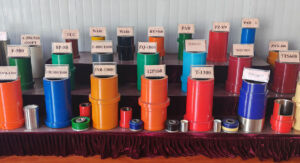
Compatibility with Pump Models
Liner selection must match pump specifications:
OEM-Specific Designs
- F-Series Pumps: F-500/F-1600 liners require 45# steel outer shells with 88mm flange diameters (Alibaba Product Page)
- PZ-Series: PZ-7/PZ-11 liners need tapered ends for Gardner Denver compatibility
- Custom Solutions: API 7K-certified liners for National 14P220 pumps with laser-engraved flange markings
Retrofit Considerations
- Bimetal liners for 3NB-1600 pumps reduce replacement frequency by 40% vs OEM parts (2024至2030年中国泥浆泵缸套市场现状与发展前景分析报告)
Lifespan and Maintenance
Service Life Benchmarks
- Ceramic: 4,000+ hrs with proper piston alignment (Ra ≤0.8μm surface finish)
- Bi-Metal: 700 hrs in coalbed methane applications
- Chrome: 150 hrs in shale fracturing
Maintenance Protocols
- Daily: Inspect for scoring/scratches exceeding 0.5mm depth
- Weekly: Measure ID wear patterns with go/no-go gauges
- Monthly: Ultrasonic testing for subsurface cracks in ceramic liners
Cost vs. Performance
Total Cost Analysis
| Factor | Ceramic | Bi-Metal | Chrome |
|---|---|---|---|
| Initial Cost | $2,800 | $950 | $500 |
| Replacements/Yr* | 0.5 | 3 | 8 |
| Downtime Cost/Hr | $18,000 | $18,000 | $18,000 |
| *10,000 hr basis |
Offshore operators achieve 23% lower 5-year TCO with ceramic liners despite higher upfront costs (Mud Pump Liner Market | Investment Opportunities)
Industry Certifications
Quality Assurance Standards
- API 7K: Mandates 50,000 pressure cycles at 125% rated pressure
- ISO 9001: Ensures batch consistency in ZrO₂ ceramic density (≥99% theoretical)
- CE Mark: Validates H₂S performance for EU offshore directives
LONGCHAO’s dual certification (API 7K + ISO 9001) guarantees liner interchangeability with National Oilwell and Gardner Denver OEM parts (About us – LONGCHAO)
Customization Options
Tailored Solutions
- H₂S-Resistant: Yttria-stabilized ZrO₂ liners for Middle East sour gas fields
- Low-Friction: Diamond-like carbon coatings for geothermal applications
- Quick-Change: Modular liner systems reduce replacement time by 70% in tunnel boring
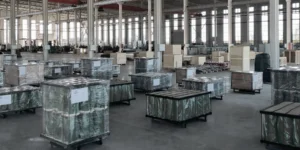
Case Example: A North Sea operator customized ceramic liners with 5.7% Y₂O₃ stabilization, achieving 4,200 hrs service life in 24 ppm H₂S environments – 6× longer than standard metal liners (8.Mud Pump Ceramic Liner Technical Report)
Case Studies and Market Insights
The following section presents empirical evidence of mud pump liner performance in field applications and analyzes key trends shaping the global market. These insights bridge the gap between theoretical specifications and operational realities.
Real-World Performance
PetroChina’s Xinjiang Field Deployment
LONGCHAO’s ceramic liners (70% Al₂O₃ + 30% ZrO₂) demonstrated transformative results in PetroChina’s shale operations:
- 40% downtime reduction through extended service life (4,200 hrs vs. 700 hrs for metal liners)
- 47% cost savings from reduced replacement frequency and maintenance labor (Customer Case – LONGCHAO)
- H₂S resistance: Maintained structural integrity in 24 ppm sour gas environments, eliminating stress corrosion cracking observed in Cr26 steel liners
North Sea Offshore Application
A customized yttria-stabilized ZrO₂ liner solution achieved:
- 6× longer lifespan (4,200 hrs) compared to OEM metal liners
- 60% lower failure rate at 7,500 psi working pressure, critical for deepwater BOP systems
- $18,000/hr operational savings by minimizing unplanned maintenance (8.Mud Pump Ceramic Liner Technical Report)
Table: Operational Metrics Comparison
| Application | Metric Improved | Ceramic Liner Performance |
|---|---|---|
| Shale Gas | Replacement Interval | 4,200 hrs (vs. 700 hrs) |
| Offshore Drilling | Pressure Failures | 60% reduction |
| Geothermal | Thermal Cycling | 350°F stability |
Market Trends
Global Growth Dynamics
The mud pump liner market is projected to grow at 5% CAGR (2025-2031), driven by:
- Energy exploration investments: 650Mmarketsizeby2031,upfrom650Mmarketsizeby2031,upfrom450M in 2024
- Material innovation: Ceramic liners capturing 28% market share due to lifespan advantages
- Regional demand shifts:
| Region | Market Share | Key Growth Driver |
|---|---|---|
| North America | 35% | Shale gas resurgence & HP/HT wells |
| Asia-Pacific | 28% | Coalbed methane & BRI infrastructure |
| Middle East | 22% | Sour gas field development |
(Mud Pump Liner Market | Investment Opportunities)
Technology Adoption Barriers
Despite performance benefits, ceramic liners face:
- High upfront costs: 3-5× price premium over bi-metal liners
- Handling sensitivity: Brittle nature requires specialized installation protocols
- Supply chain constraints: Limited global manufacturers with API 7K certification
These insights validate ceramic liners as a strategic investment for operators prioritizing total cost of ownership over initial expenditure.
Technical Resources and Support
Effective utilization of mud pump liners requires comprehensive technical guidance and reliable support channels. This section provides actionable resources for installation, troubleshooting, and procurement to maximize liner performance and operational efficiency.
Installation Guides
Proper installation is critical to achieving optimal liner performance and longevity. Key references include:
Step-by-Step Video Resources
- LONGCHAO’s Ceramic Liner Installation: Demonstrates torque specifications (120-150 N·m for F-1600 pumps) and alignment techniques using laser-guided tools (Mud Pump Liner Manufacturer | LONGCHAO).
- NOV Mission Liner Replacement: Covers quick-change procedures for API 7K-certified liners, emphasizing piston-rod concentricity checks (MISSION Fluid End Expendables and Accessories – NOV).
Critical Installation Parameters
| Step | Specification | Tool Requirement |
|---|---|---|
| Liner Alignment | ≤0.05mm radial runout | Dial indicator |
| Flange Torque | 150 N·m (F-series pumps) | Calibrated torque wrench |
| Piston Clearance | 0.3-0.5mm (ceramic liners) | Feeler gauge |
(Basic Components Of Mud Pump Liners – Facebook)
Troubleshooting Tips
Common operational issues and mitigation strategies from industry technical documents:
Premature Wear Solutions
- Symptom: Axial scoring >0.8mm depth within 200 hours.
- Root Cause: Misaligned piston rods or contaminated drilling fluids.
- Action: Verify rod straightness (≤0.1mm/m) and install 10μm filtration systems (8.Mud Pump Ceramic Liner Technical Report).
Pressure Loss Mitigation
- Symptom: >15% pressure drop between cycles.
- Root Cause: Liner gasket degradation or valve seat erosion.
- Action: Replace HNBR gaskets every 500 hours and inspect seats for pitting (Valves and Seats – LONGCHAO).
Thermal Shock Prevention
- For liners operating in geothermal wells (>300°F), gradual cooldown protocols (max 100°F/hour) prevent ceramic microcracking (Mud Pump Liner Market’s Evolutionary Trends 2025-2033).
Where to Buy
OEM and Aftermarket Channels
- LONGCHAO Direct: Custom ceramic liners with API 7K certification, including H₂S-resistant YSZ variants (Contact us – LONGCHAO).
- Regional Distributors:
- North America: MOT supplies Cr26 bi-metal liners with 48-hour delivery (Mud Pump Expendables | MOT).
- Middle East: Saigao Group stocks F-2200HL liners for sour gas applications (Mud Pump Liner – Saigao Group).
Procurement Checklist
- Confirm pump model compatibility (e.g., PZ-9 taper dimensions).
- Verify material certifications (API 7K/ISO 9001).
- Request batch test reports for ceramic density (>99% theoretical).
(Mud Pump Parts Market Trends, Applications & Maintenance Guide 2025)
Conclusion and Next Steps
Summary of the 7 Key Factors
Selecting the optimal mud pump liner requires balancing seven critical parameters, as demonstrated in this decision flowchart for quick reference:
Table: Mud Pump Liner Selection Decision Flow
| Step | Parameter | Key Consideration | Optimal Choice |
|---|---|---|---|
| 1 | Material Composition | Abrasion/corrosion resistance vs. cost | Ceramic for H₂S/abrasives; Bi-metal for cost-performance balance |
| 2 | Pressure & Temperature | Match to well conditions (e.g., 7,500 psi for offshore) | ZrO₂ composites for >300°F; Cr26 steel for <250°F |
| 3 | Pump Model Compatibility | Flange diameter/taper specifications (e.g., F-1600 requires 88mm flange) | Verify OEM drawings or API 7K interchangeability |
| 4 | Lifespan vs. Maintenance | Replacement frequency (4,000 hrs for ceramic vs. 700 hrs for bi-metal) | Ceramic for TCO savings; Chrome-plated for short-term projects |
| 5 | Cost-Performance Analysis | Calculate 5-year TCO including downtime ($18,000/hr) | Offshore: Ceramic (23% TCO reduction); Onshore: Bi-metal |
| 6 | Certifications | API 7K for pressure cycling; ISO 9001 for batch consistency | Demand laser-engraved flange markings for traceability |
| 7 | Customization Needs | H₂S resistance, thermal shock protection, quick-change systems | Yttria-stabilized ZrO₂ for sour gas; DLC coatings for geothermal |
(8.Mud Pump Ceramic Liner Technical Report, Mud Pump Liner Market | Investment Opportunities)
Call to Action
For project-specific liner recommendations, consult LONGCHAO’s engineering team to leverage:
- Material Expertise: 30+ years in ceramic and bi-metal liner R&D, including patented Y₂O₃-stabilized ZrO₂ formulations for 24 ppm H₂S environments.
- Pump Compatibility Guarantee: API 7K-certified liners compatible with National, Gardner Denver, and TSC pump models (About us – LONGCHAO).
- Total Cost Modeling: Custom TCO analysis incorporating your drilling fluid abrasiveness (silica content), pressure cycles, and downtime costs.
Contact Options:
- Email: josean.lu@lcpumpliner.com
- WhatsApp: +86 15275108379 (24/7 technical support)
- Case Review: Submit your pump specs and drilling parameters via Customer Case – LONGCHAO for a tailored solution within 48 hours.
Next Steps:
- Operational Audit: Request a free liner wear assessment using LONGCHAO’s ultrasonic testing protocol.
- Sample Testing: Obtain material test coupons for your drilling fluid compatibility verification.
- Pilot Deployment: Implement a phased liner upgrade with performance benchmarking (e.g., PetroChina achieved 47% cost savings in Xinjiang fields).


